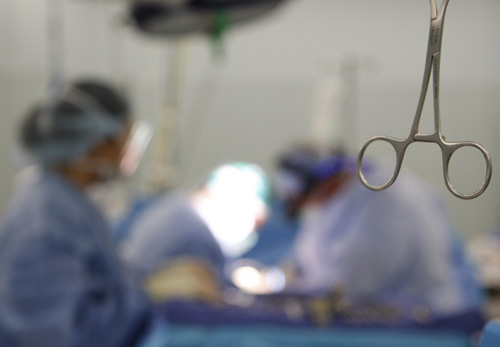Microdiscectomy
A minimally invasive microdiscectomy is a procedure to remove herniated disc material that presses on nerves or the spinal cord causing pain and weakness in the patient. Many ruptured discs may be resolved on their own, non-surgically, so that microdiscectomy is not necessary.
About the Microdiscectomy Procedure
During the surgery, a fluoroscope is used to project live x-ray pictures onto a monitor giving the surgeon a clearer view of the area being treated. The spine surgeon typically performs most of the surgery to repair the ruptured disc while watching it on the monitor.
The spine surgeon will wear safety glasses with a microscope attached to each eye to increase their vision of the small area being operated on.
About a one inch incision is made over the injured disc on the patient’s back. Small wires are slowly inserted into the incision site to help split the muscle in the spine and allows for a small opening for the spine surgeon to work within. The wires help spread the muscles instead of cutting it and causing unnecessary damage. A specially fitted retractor is used to hold the muscles to the side and out of the way during the operation. A very tiny amount of bone (lamina) is removed to allow for more space between the two vertebrae, in which no instability results from this. Then the nerve is retracted towards the middle of the spine. This procedure helps remove pressure on the pinched nerve.
In most cases microdiscectomy is performed as an outpatient procedure or 23 hour stay. Most patients are able to return to work in one to two weeks following a microdiscectomy.

Spine Physicians Institute treats back pain, neck pain, herniated discs, stenosis and other spine problems. Patients come to the spine center from across the Dallas-Fort Worth metroplex. Dr. Sethuraman is one of few Mayo Clinic fellowship-trained spine surgeons in the North Texas area. A fellowship is the highest level of medical education in the U.S.
